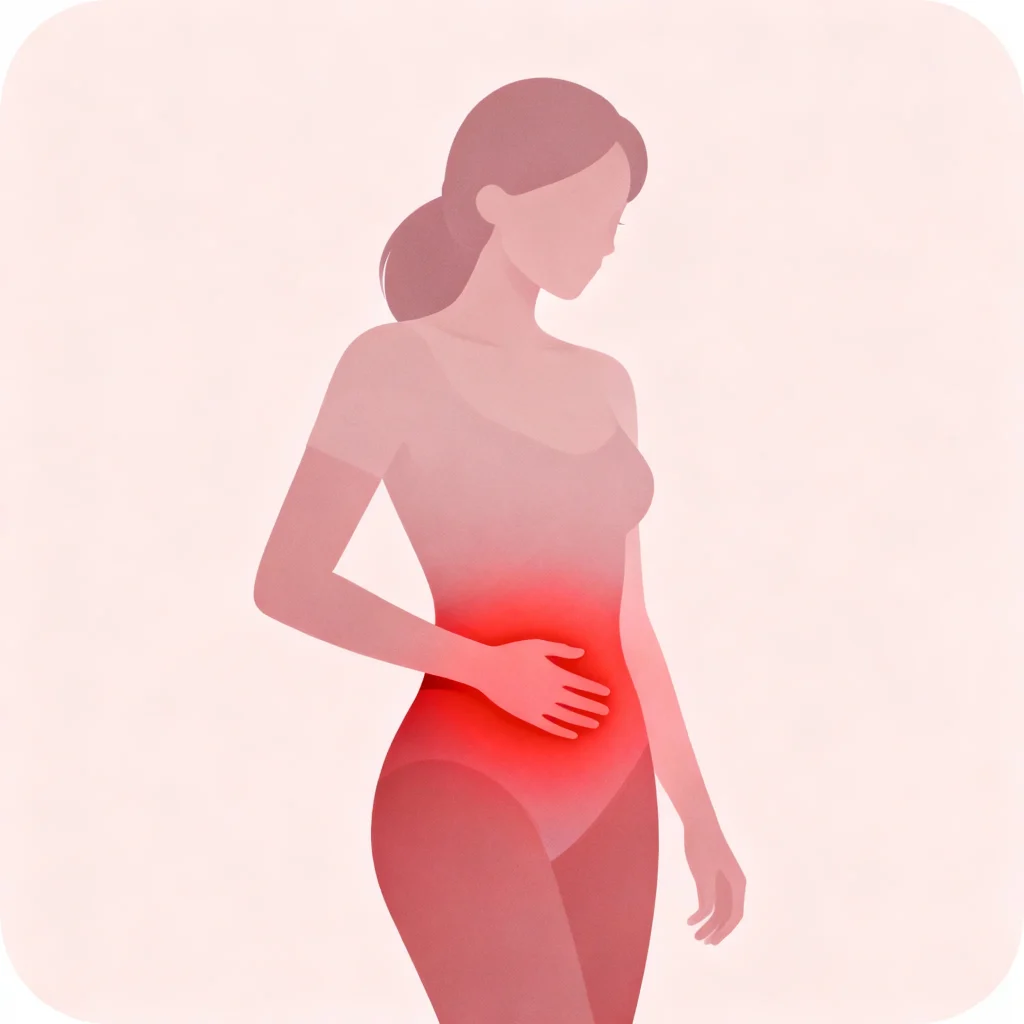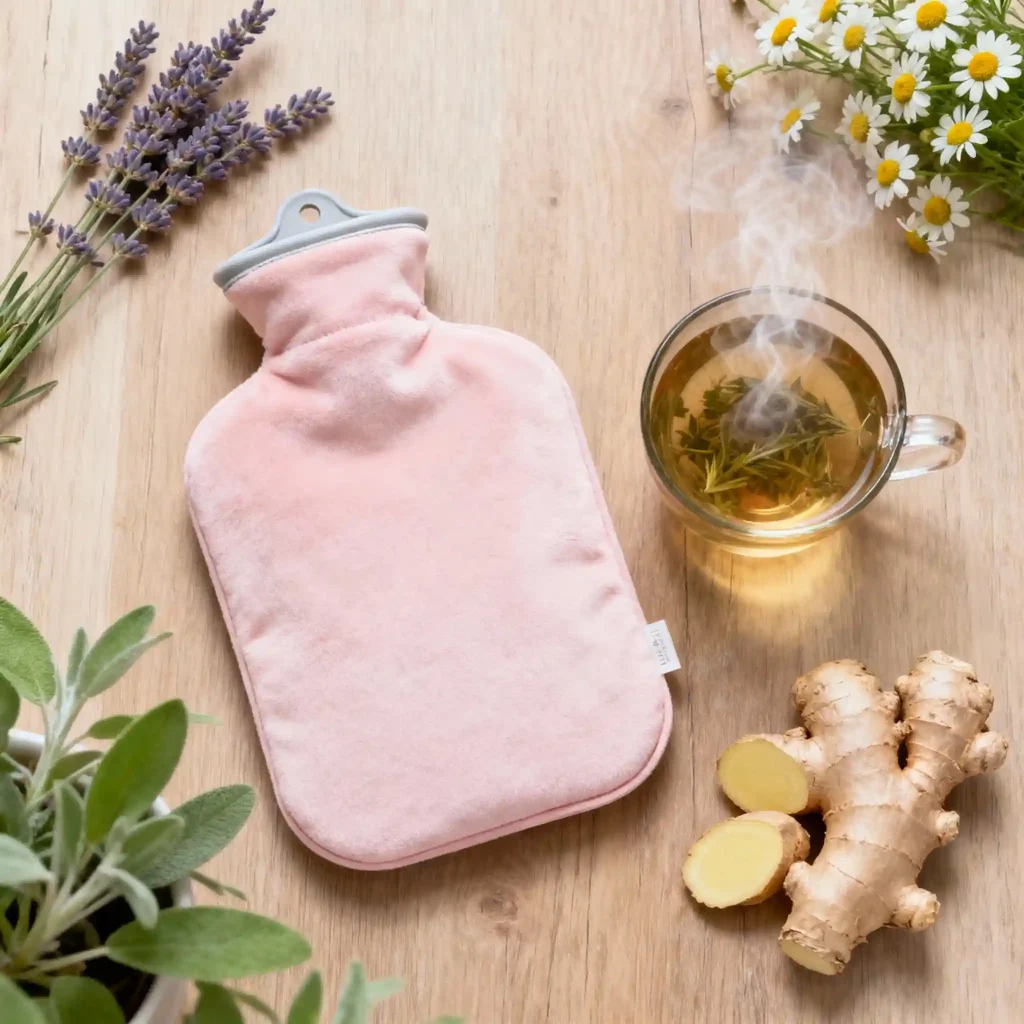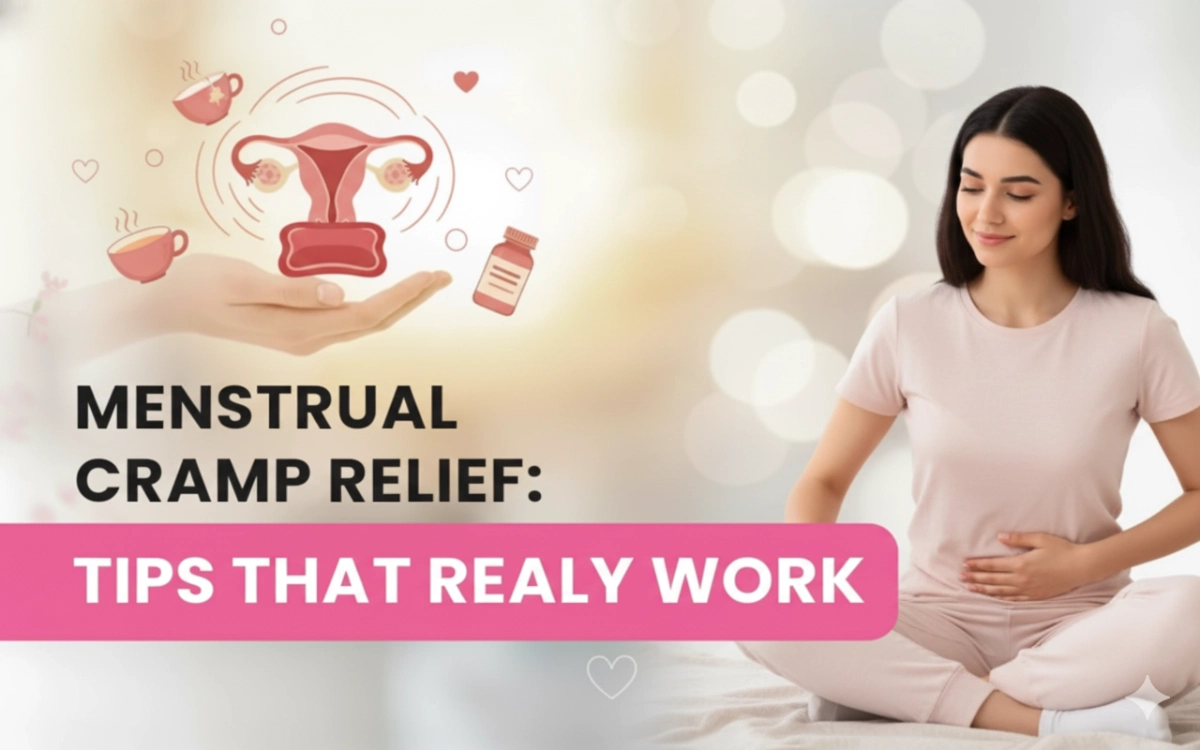Menstrual cramps are a shared experience for many women, yet the intensity and impact can feel very personal. For some, the sensation is a dull ache that settles in the lower abdomen and fades with rest. For others, the pain radiates to the lower back and thighs, arrives before the period even starts, and lingers for days. When cramps interrupt work, study, exercise, or sleep, it is natural to look for menstrual cramp relief that truly works rather than quick fixes that fade after an hour. Understanding why cramps happen and how to reduce period pain with evidence-based strategies is the most reliable path to feeling better month after month.
Cramps occur when the uterus contracts to shed its lining. These contractions are driven by natural chemicals called prostaglandins. Higher prostaglandin levels are linked with stronger contractions, reduced blood flow to the uterine muscle, and more intense pain. The good news is that modern period pain treatment focuses on calming those contractions, easing inflammation, and supporting your body’s own pain control systems. When these approaches are combined with thoughtful lifestyle choices and natural remedies for menstrual cramps, many women notice a clear difference by the next cycle.
This guide explains what causes painful periods, when to seek medical care, which treatments have the strongest evidence, and which menstrual pain relief tips fit easily into daily life. The aim is to help you build a practical plan that brings reliable relief while safeguarding your long-term reproductive health.
Why Menstrual Cramp Relief Matters in Dubai
Dubai offers high-quality healthcare and an active lifestyle, yet the pace of life can make self-care difficult during the menstrual week. Long commutes, demanding work schedules, and frequent air conditioning can contribute to dehydration and muscle tension. Many women also increase caffeine to stay alert, skip meals due to meetings, and postpone exercise when cramps start. These habits can worsen symptoms even when the underlying cause is straightforward primary dysmenorrhea, which is the medical term for period pain without a separate disease process.
Heat and humidity add another layer. When the temperature rises, the body loses fluid faster, and even mild dehydration can intensify headaches and muscle cramps. For menstruating women, hydration is closely linked to overall comfort, energy levels, and the way the uterus responds to prostaglandins. Access to expert guidance in Dubai means you can combine medical care with practical adjustments that fit a busy city routine. With a clear plan, most women can manage cramps effectively, maintain productivity, and protect their quality of life during every phase of the cycle.
What Causes Cramps and When Pain Is Not Normal
Primary dysmenorrhea is the most common cause of period pain. It is driven by prostaglandins that peak just before bleeding begins. The contractions help the uterus release its lining, which is a normal biological process. Pain usually starts one to two days before the period and improves by the second or third day of flow. Nausea, loose stools, fatigue, and mood changes may accompany the cramps because prostaglandins influence the digestive tract and the central nervous system as well.

Secondary dysmenorrhea means the pain is linked to a specific gynaecological condition. Endometriosis is one example, where tissue similar to the uterine lining grows outside the uterus and reacts to hormones in each cycle. Adenomyosis occurs when similar tissue grows within the muscular wall of the uterus and can cause heavy periods and deep aching pain. Uterine fibroids, pelvic inflammatory disease, and copper intrauterine devices can also contribute to cramps. Pain that grows more severe over time, lasts well beyond the first days of bleeding, or persists between periods should be evaluated because persistent symptoms are less likely to be explained by primary dysmenorrhea alone.
There are other red flags that warrant medical review. Pain that suddenly changes character, pain accompanied by fever, foul vaginal discharge, bleeding that soaks through pads every hour, or pain that begins for the first time after the age of thirty all deserve attention. If intercourse is painful or bowel movements are painful during the period, that pattern can point to endometriosis. When in doubt, checking in with a gynaecologist is always the safer choice, because targeted treatment is the fastest route to reliable menstrual cramp relief.
How Doctors Diagnose the Cause of Period Pain
Diagnosis begins with a detailed history. A doctor will ask when the cramps started, how long they last, what makes them better or worse, and whether there are associated symptoms such as heavy bleeding, clotting, bowel changes, or pain during intimacy. A review of the menstrual calendar often reveals patterns that guide testing and treatment. A focused examination can identify pelvic tenderness, an enlarged uterus, or signs of infection.
Ultrasound is commonly used to visualise the uterus and ovaries. It can detect fibroids, ovarian cysts, and features that suggest adenomyosis. Blood tests may be ordered when bleeding is heavy to check for anaemia or when a hormonal imbalance is suspected. In selected cases, laparoscopy is recommended to diagnose and treat endometriosis. The goal is not to order every test but to match the investigation to the pattern of symptoms so that period pain treatment is both precise and effective.
Evidence-Based Period Pain Treatment
Successful treatment addresses the biology of cramps. Since prostaglandins drive both contractions and inflammation, non-steroidal anti-inflammatory medicines are a logical first step. Ibuprofen and naproxen reduce prostaglandin formation and can significantly calm uterine contractions. They work best when taken at the earliest sign of discomfort or even twelve to twenty-four hours before bleeding starts if your cycle is predictable. Taking the correct dose with food and water improves both safety and effectiveness. For many women, this simple step transforms the first one or two days of the period.
Hormonal therapies reduce pain by thinning the uterine lining and stabilising ovulation. Combined oral contraceptive pills, the progestin-only pill, the vaginal ring, and certain hormonal intrauterine systems can all reduce menstrual volume and cramping over several cycles. Some women prefer extended cycle regimens that reduce the number of periods each year. These options are discussed in a personalised way because age, medical history, and pregnancy plans matter when choosing a method.
When secondary causes are present, treatment targets the underlying condition. Endometriosis can be managed with hormonal suppression, pain control, and, in some cases, laparoscopic surgery to remove visible lesions. Fibroids may respond to medication, uterine artery embolisation, or surgery depending on size, location, and reproductive goals. Pelvic inflammatory disease requires antibiotics and follow-up. Treating the root cause delivers lasting menstrual cramp relief and prevents complications.
Supportive care enhances outcomes. Topical heat is a powerful and safe tool. A heating pad or warm compress placed over the lower abdomen relaxes smooth muscle, increases blood flow, and dampens pain signals. Many women find heat as effective as a single dose of common pain relievers when used consistently during the first days of the period. Gentle movement also helps. Light walking, stretching, and yoga poses that open the hips reduce pelvic congestion and counteract the tendency to tense the abdominal wall during pain.
Transcutaneous electrical nerve stimulation is another option that some clinics offer. Mild electrical pulses delivered through skin pads can interfere with pain transmission pathways and provide comfort without medication. This is not necessary for everyone, but it is a helpful addition for women who prefer a drug-sparing plan.
Natural Remedies for Menstrual Cramps That Complement Medical Care
Natural remedies for menstrual cramps can fit easily alongside conventional treatment and often improve comfort without side effects. Ginger is a favourite for many women. Taken as a tea or capsule during the first two to three days of bleeding, ginger can reduce nausea and appears to have a modest anti-inflammatory effect that complements ibuprofen or naproxen. Cinnamon has also been studied for menstrual pain and may help reduce prostaglandin production while easing bloating.

Magnesium is a nutrient that relaxes smooth muscle and supports nerve function. Some women notice fewer cramps and improved sleep when they increase magnesium-rich foods such as leafy greens, nuts, seeds, and legumes. If a supplement is considered, it should be discussed with a doctor to match the dose to individual needs. Omega-3 fats from salmon, sardines, mackerel, flaxseed, and walnuts can shift the body toward producing less inflammatory prostaglandins over time. This dietary pattern does not provide instant relief, but over several cycles, it can soften the overall intensity of cramps.
Hydration matters more than most people expect. The uterus is a muscle, and muscles cramp more readily when the body is low on fluid. Sipping water consistently through the day, especially in Dubai’s climate, reduces headaches and fatigue and supports steadier energy. Limiting caffeine during the first days of the period can also help because high caffeine intake may increase jitteriness, worsen sleep, and heighten sensitivity to pain. Gentle abdominal massage with a simple unscented oil provides comfort for some women by relaxing the superficial muscles and promoting warmth across the lower belly.
Sleep is a natural pain modulator. Planning an earlier bedtime on the two nights that typically feel worst can change the entire experience of a cycle. A dark, cool room, a light evening meal, and a short wind-down routine make restorative sleep more likely. When cramps disturb rest, a short nap during the day is not a luxury but a practical strategy for recovery.
Building a Personal Menstrual Pain Relief Plan
A practical plan starts before the period arrives. Tracking the cycle with a calendar or app identifies the typical window when symptoms begin. Preparing a small kit with a heating pad, preferred pain reliever, a refillable water bottle, and ginger tea means you are ready when the first twinge appears. If you tolerate non-steroidal anti-inflammatory medicines, taking the first dose at the earliest sign of discomfort often prevents the pain from escalating. Applying heat at the same time gives a two-step approach that addresses both chemistry and muscle tension.
Food choices in the days leading up to the period can make cramps feel less intrusive. Focusing on whole foods, lean protein, colourful vegetables, whole grains, and healthy fats creates a steady background of nutrients that calm inflammation. Salty snacks, very sugary desserts, and heavy late-night meals can promote bloating and restless sleep, which leave you more vulnerable to pain. Gentle movement every day, even if it is a short walk after dinner, improves circulation and encourages endorphin release, the body’s natural pain relief system.
If pain remains moderate to severe despite these steps, booking a visit with a gynaecologist is the right next move. Persistent pain deserves a more detailed look, not stronger painkillers taken month after month without an explanation. Tailored period pain treatment brings both relief and peace of mind.
FAQs (Frequently Asked Questions)
When should I see a doctor about period pain?
You should seek medical care if cramps stop you from attending work or school, if they do not improve with over-the-counter pain relief and heat, if bleeding becomes unusually heavy, or if pain occurs between periods. You should also book a visit if pain has worsened over time or begun after your thirties, since these patterns raise the chance of a secondary cause that needs specific treatment.
Can birth control help with menstrual cramp relief?
Hormonal contraception can reduce cramp intensity by thinning the uterine lining and stabilising hormone fluctuations. Options include combined pills, the progestin-only pill, the vaginal ring, and certain intrauterine systems. The best choice depends on your age, health history, and plans for pregnancy, so discussion with a gynaecologist is essential.
Which natural remedies for menstrual cramps have the best support?
Heat therapy has strong practical support and is safe for most women. Ginger during the first days of flow can be helpful, and a diet higher in omega-3 fats may reduce pain intensity over time. Magnesium-rich foods support muscle relaxation. These approaches work best as part of a broader plan that may include medication when needed.
Is severe cramping always caused by endometriosis?
Endometriosis is a common cause of severe cramps, but it is not the only explanation. Adenomyosis, fibroids, pelvic infections, and certain devices can contribute. Accurate diagnosis relies on a full assessment, not symptoms alone, which is why a clinical review is important when pain is persistent.
How can I reduce period pain if I have a busy work week?
Planning makes a difference. Keep your chosen pain reliever and a heating pad handy, start treatment at the first hint of cramps, schedule a lighter workout rather than skipping movement, drink water regularly, and aim for an earlier bedtime on the two nights that tend to be hardest. Small steps add up to meaningful relief even on packed days.
A Note from Dr. Neha Lalla
Painful periods are common, but they should not control your life. The combination of timely medication, heat, movement, and supportive nutrition brings relief for most women within one to two cycles. When pain persists or grows worse, a careful assessment can uncover a cause that responds to targeted treatment. My goal is to help you build a plan that respects your body, suits your schedule in Dubai, and restores comfort and confidence every month.
Conclusion and Next Steps
Reliable menstrual cramp relief is possible when you address the process that causes pain and support the body’s natural resilience. Understanding how to reduce period pain begins with recognising the role of prostaglandins and ends with a personalised plan that includes medication when appropriate, natural remedies for menstrual cramps, and realistic lifestyle adjustments. If your symptoms are new, severe, or simply no longer tolerable, do not wait for another cycle to pass. Thoughtful period pain treatment can transform the way you experience your period and protect your long-term health.
If you live in Dubai and want a tailored plan that matches your routine, book a consultation with Dr. Neha Lalla. Together, you can review your cycle history, assess for secondary causes, and create practical menstrual pain relief tips that start working this month and keep working in the months ahead.


